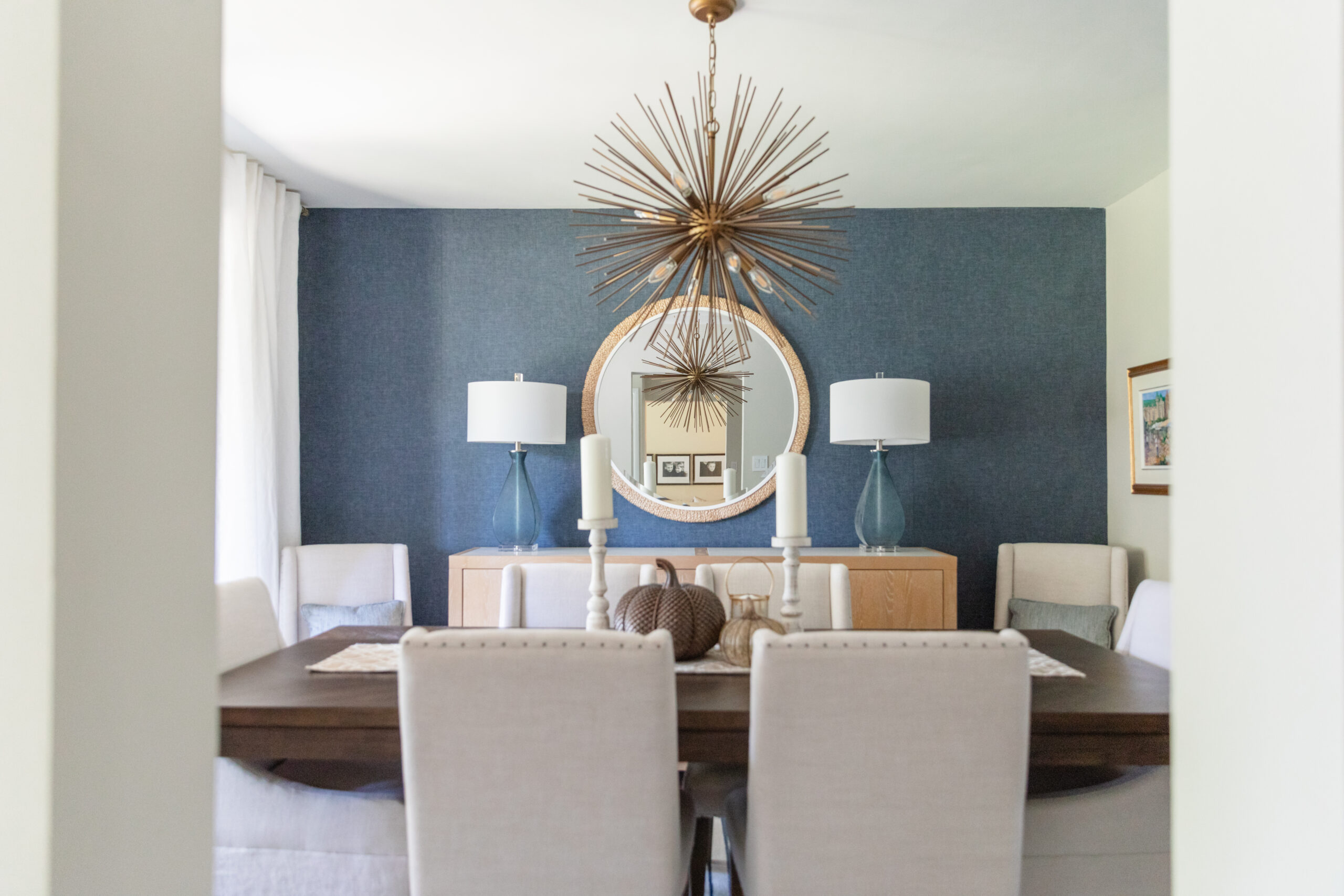Adding Colour to Your Home
How to add colour to your home seamlessly
Many people find that adding colour to their home can be a daunting task. What colours do you choose? What if you add too much colour or mix colours that don’t go together? Studies show that colour can influence our mood and can have a big impact on our lives! In this post, I will outline how to add colour to your home seamlessly.

1. How much colour would you like – When considering how much colour you’d like to incorporate into your home, it’s helpful to draw inspiration from real-life examples. Try flipping through magazines or pinterest – what spaces are you most drawn to? Mostly neutral with subtle colour, neutral with bold colour or many different colours and patterns? Getting a feel for what you like, can help you determine if you are looking to overhaul your space with colour or if you are hoping for a subtle pop of colour to add some vibrance to your space.
Take, for instance, our recent dining room project. The original space felt dark and cramped, and my client had indicated that they wanted to add some life and colour to their space. By asking the right questions, I was able to determine that they were ready for a big pop of colour! By introducing navy blue grass cloth wallpaper on one accent wall, we added depth and sophistication while still maintaining a balance with neutral tones elsewhere in the room. In doing this were able to transform her space into a vibrant and inviting area for gatherings.


2. Determine your overall palette – Find an object that is a colour inspiration for you. It should contain lots of colours that you are drawn to and also has an undertone that coordinates with the hard finishes in your home (tile, quartz, flooring). It can be an area rug, a favourite piece of art or even a favourite accent pillow. In this project I looked to various elements for inspiration. The navy blue grass cloth wallpaper served as a starting point, providing rich tones that anchored the space. Additionally, I incorporated mixed transitional woods to tie in the dining area, offering warmth and cohesion. By identifying these key elements, I was able to create a palette that felt harmonious and visually appealing.

3. Identify the lighting in the room – Lighting plays a crucial role in how colours are perceived within a space. The direction the rooms are facing really determines whether a certain colour will work or not.
In this dining room project, I carefully considered the direction of natural light and how it interacted with our chosen colour scheme. The navy blue grass cloth wallpaper, for example, was strategically placed on the accent wall to maximize its impact in areas with ample natural light. By understanding how lighting influences colour, we were able to create a balanced and inviting atmosphere that complemented the overall design aesthetic.

You will notice, not once did I mention what colours are trending. It’s so important to make sure you are choosing colours that YOU love. Don’t get hung up on what the trends are, make sure you are surrounded with colours that truly make you feel at home.
Like this post? Pin it!





